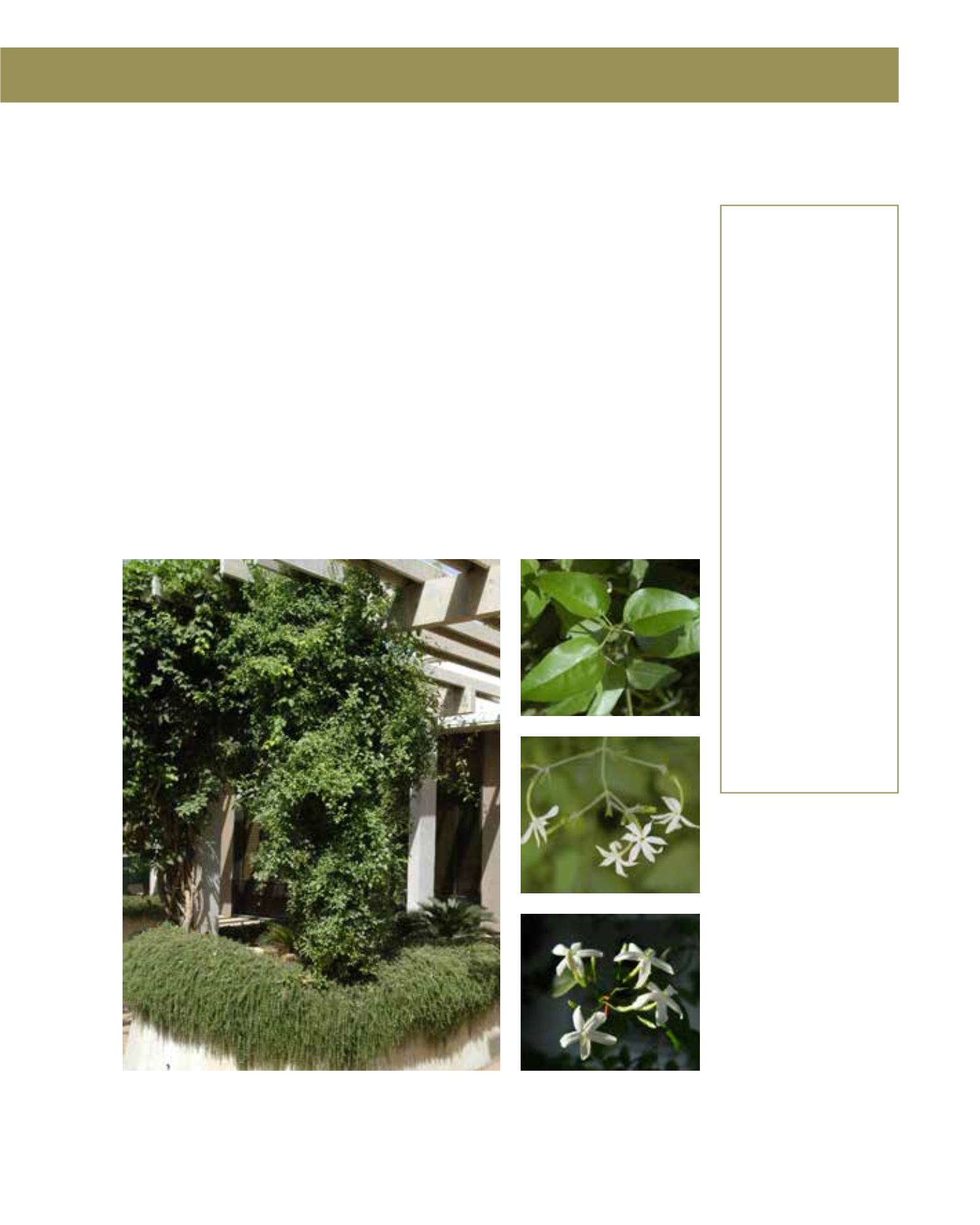

GENERAL
Origin
:
sub-Mediterranean,
Mediterranean
Vigour
:
fairly fast
growing
Humidity
:
semi-arid, semi-
humid, very
humid
Propagation :
sowing and
pricking out,
layer, cuttings
Maintenance :
moderate
CONDITIONS
Urban climate :
resistant
Dessication :
vulnerable
Stagnant water :
vulnerable
Irrigation
:
high
Salinity/ppm :
low (600 ppm)
Hardiness
:
-6°C
SHAPE
Type
:
climbers
Height
:
3 m-6 m
Spread
:
4 m-7 m
Foliage
:
evergreen
FLOWER
Colour
:
white, pink
Size
:
2 cm
Period
:
February - August
Smell
:
aroma, strong,
gives freely of
its scent, flower,
sweet
FRUIT
Type of fruit :
berry
Fruit size
:
1.1 cm
In forests of subtropical China, the Pink Jasmine may be found growing wild as a vigorous clim-
ber up to 6 metres high. The leaves are compound with five or seven leaflets from which the ter-
minal one is the largest. They usually last during winter, but may shed in cold winters without any
damage to the twining stems as long as freezing is mild and brief. A large number of pink buds
are borne in late winter to turn into white, star-shaped flowers 2 cm across. A pleasant, sweet
scent is emitted during flowering in spring. Flowers also appear less profusely in summer and au-
tumn. The plant is a source of aromatic oil that may be extracted to produce perfume. Pollination
results in dark-blue berries. Established plants take full sun and tolerate some drought. However,
flowers are also produced in abundance where plants thrive in the partial shade of palm groves.
They do well in pots indoors or in containers with excellent drainage. A lush appearance is achie-
ved in fertile soil either acidic or alkaline with supplemental irrigation in summer. Pruning in
winter does not affect the flowers, since they grow in terminal clusters on new growth. Pink Jas-
mines require support such as a fence or, if grown in front of a wall, some sort of trellis is needed.
Semi-hardwood cuttings in late summer root easily and plants already flower when young. Other
methods are layering and sowing seeds that have been cleaned and dried first. The plant is so easy
to grow that it has become invasive in some regions with favourable climate.
172
Jasminum polyanthum,
Oleaceae
Pink Jasmine
















